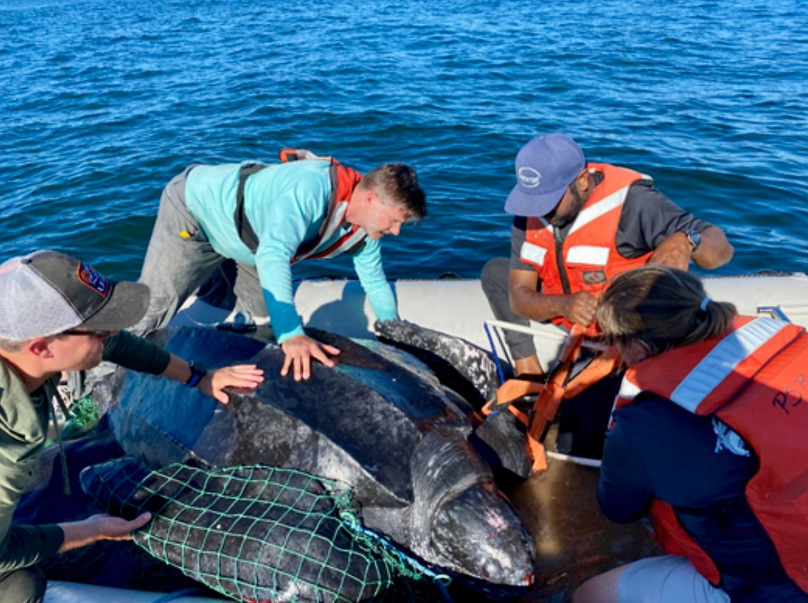The leatherback turtle can weigh up to 2,000 pounds and reach as long as six feet – nearly the equivalent of a bison roaming the oceanic plains.
Marine scientists at the University of Miami’s Rosenstiel school, in a study spanning five years, discovered extensive activity by the vulnerable species along the U.S. coastline.
“Our study revealed a significantly higher utilization of the U.S. coastline by leatherbacks,” said Mitchell Rider, a research scientist who was lead author of the study, in a news release by the university this month. Rider is with the Rosenstiel School’s NOAA Cooperative Institute for Marine and Atmospheric Studies on Virginia Key.
The areas emerged as possible major foraging grounds for leatherbacks migrating along the coastline, with notable activity observed off the coast of North Carolina.
The study was published in the Journal Frontiers in Marine Science challenges previous assumptions, a Rosenstiel news release said.
With impending developments, particularly the construction of offshore wind farms along the eastern coastline, the findings serve as a relevant guide for conservation managers to minimize impacts on this endangered species, the news release stated.
It is estimated that the global population of leatherbacks has declined 40 percent over the past three generations.

Scientists have known that leatherbacks commonly swim from the South and mid-Atlantic regions during the warmer months to feed and migrate south again when water temperatures drop, the release stated. Questions, however, remained about what they were doing along the way.
The waters off Cape Cod and Nantucket promote a high abundance of jellyfish in the late summer and early fall – a primary protein for the sea turtles.
The research involved the tagging and monitoring of 52 leatherback sea turtles off the coasts of Cape Cod, Massachusetts and Beaufort, North Carolina.
Using advanced satellite tags capable of recording location, depth, and temperature data, scientists were able to track and learn where the turtles go and the behaviors they exhibit during their migrations.
Leatherbacks were found nesting, foraging and wintering in an area from North Carolina to the Floria Keys, known as the South Atlantic Bight. The turtles might be attracted to the blooms of cannonball jellyfish which occur nearshore.
“Our findings signify a paradigm shift in understanding leatherback turtle behavior along the U.S. coastline,” Rider said. “By highlighting key foraging grounds and migration patterns, we aim to inform targeted conservation strategies to safeguard the future of these magnificent.
Invest in Local News for Your Town. Your Gift is tax-deductible


